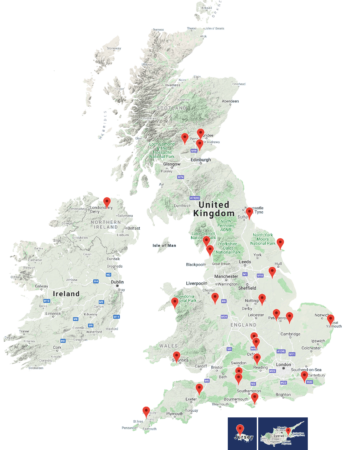There are three ways you can make a first jump
Static Line
A static line descent can be made after usually about 6 hours of ground training and involves the student jumper leaving the aircraft at 3500 feet. The main parachute is deployed using a device called a ‘static line’. This is a length of webbing attached to the aircraft at one end and the bag, in which the main parachute is kept, at the other, as the jumper falls away from the aircraft, the static line pulls the main parachute out and begins the deployment.
The parachute or canopy used is a modern ‘square parachute’ made of technically advanced materials and specifically designed to allow the student jumper to steer the canopy to the landing area. A radio attached to the jumper’s helmet is often used to coach the student and assist in the landing of the parachute.
This type of jump opens the way to becoming a skydiver, further training and more descents will allow the student to skydive without the static line, deploying the parachute manually and achieving that all-important ‘first free fall’ descent.
Accelerated Freefall (AFF)
AFF is an intensive course, more expensive but allowing rapid progression in skydiving. Your first descent is from 12,000 feet accompanied by two highly specialised instructors who will guide you in freefall by way of hand signals and under canopy with radio communication. You will experience 40-45 seconds of freefall before you open your own, ram-air canopy at 5,000 feet. This is the real sport!
Your first AFF jump is part of a week’s course of 8 levels and a minimum of 10 consolidation jumps which will qualify you as a skydiver in your own right. If you know you want to take up skydiving, this is probably the quickest and most motivating method by which to do it.
Once qualified you can move on to learn the skills required to jump with your friends and to learn new disciplines.
Tandem
Tandem skydiving offers a quick and easy introduction to free-fall using a dual harness system.
You are securely attached to an experienced tandem instructor takes charge of vital functions such as opening the parachute and landing safely. Your preparation for the jump takes only 15 minutes. Free from responsibility, you can relax and enjoy the skydive knowing there is a qualified instructor in charge.
Weather permitting, you will exit the aircraft from around 10,000 feet, experiencing 30 seconds of freefall, which is quite a rush! At 5,000 feet, the instructor deploys a huge ram-air parachute designed for two. You can have your choice of a gentle or thrilling flight to the ground, where you should have a soft landing. Tandem parachuting allows many disabled people, subject to a satisfactory risk assessment, to experience the thrill of skydiving. Tandem jumpers who are bitten by the skydiving bug move on to either AFF or Static Line training.
Restrictions
Acceptance for parachute training is entirely at the discretion of the individual Parachute Training Organisation. For full information, please contact your chosen Affiliated Parachute Training Organisation.
RISE TO A NEW CHALLENGE!
Want to take the next step and begin your journey to new heights?
There are 26 affiliated Parachute Training Organisations in the UK for you to choose from. All of them follow the same safety standards so wherever you jump and whatever training method you choose, you can rest assured that an exhilarating experience awaits.




